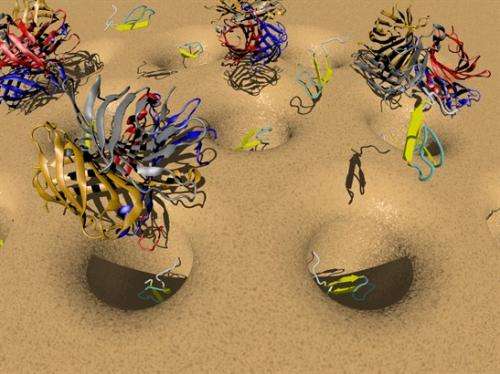Model of sieve separating the target molecule, hepcidin, from compounds found in complex bodily fluids.
Dr. Hung-Jen Wu, assistant professor of chemical engineering at Texas A&M University, connects industrial processes of membrane separation and molecular sieve technology to identify a new biomarker for iron regulator-related diseases and cancer. The biomarker is named hepcidin.
In his research alongside other colleagues, Wu captures small proteins and peptides from complex bodily fluids with well-engineered nanopores before evaluating them in a mass spectrometer for study and identification. Using a sieve, the target molecule (hepcidin) is separated from complex human bodily fluids such as blood and urine, to better detect the target in the mass spectrometer. Essential to the process is the development of the nanopore, which is a "very simple and stable fabrication by self-assembly of surfactants," Wu said, and based heavily in chemical engineering principles.
"We look at one hormone, hepcidin, which is an iron regulator that is associated with anemia, inflammation and even early-cancer detection, among many other different diseases. If you combine with other biomarkers, even greater [number of] diseases can be discovered," said Wu.
More information: "Nanopore Film Based Enrichment and Quantification of Low Abundance Hepcidin from Human Bodily Fluids," was published in the July 2014 edition of Nanomedicine: Nanotechnology, Biology, and Medicine, volume 10 (number 5), pages 879-888. www.ncbi.nlm.nih.gov/pubmed/24566273
Provided by Texas A&M University




















